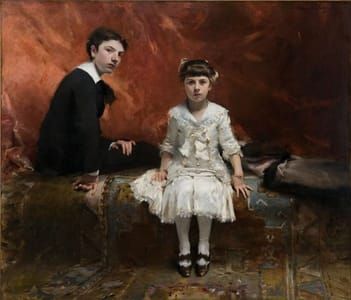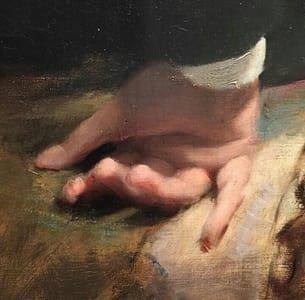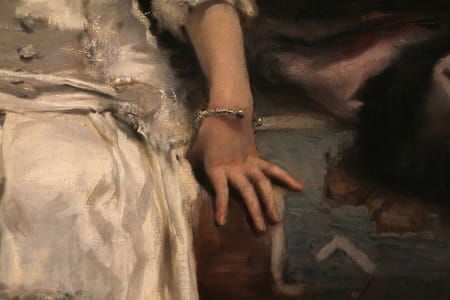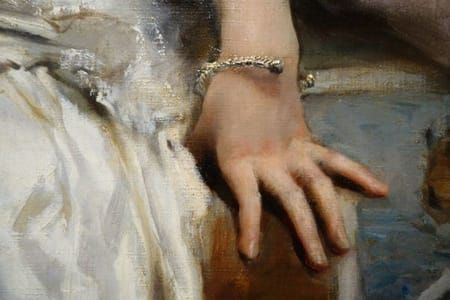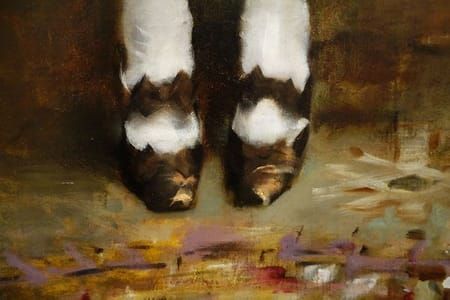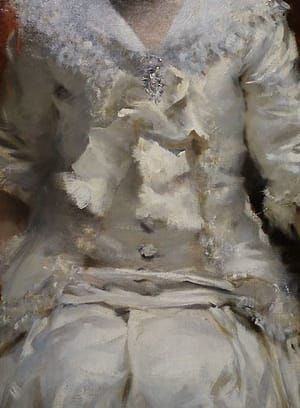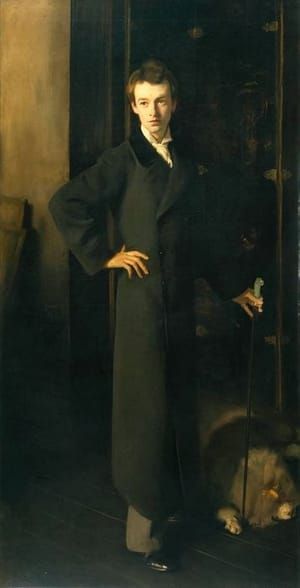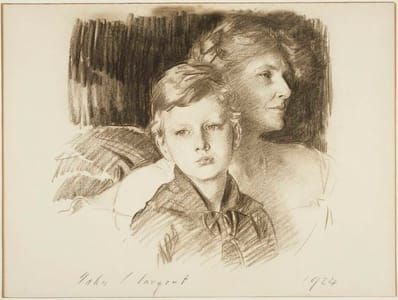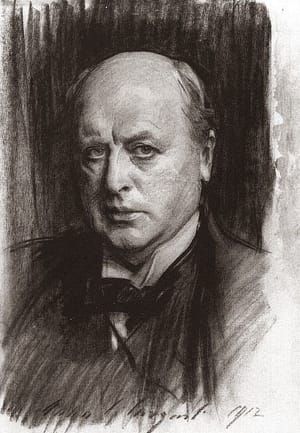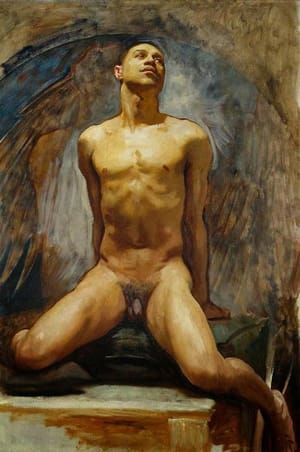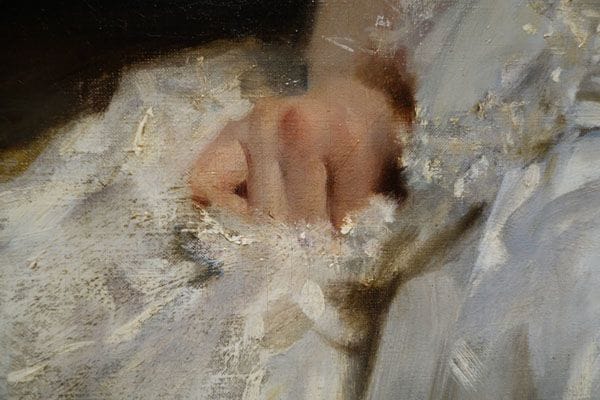

Pailleron Children, 1880
John Singer Sargent
Sargent’s first formal double portrait depicts the children of playwright Édouard Pailleron and his wife, Marie. Young Édouard (1865–?) and Marie-Louise (1870–1951) are dressed traditionally in black and white, but exotic references are found in the Persian carpet and Marie-Louise’s torque bracelet and brooch. Marie-Louise, who later became a literary figure in her own right, recounted (perhaps with exaggeration) 83 sittings for the portrait, as well as battles about costume and the arrangement of her hair. Sargent captures the young girl’s disquieting intensity in an image that departs from conventional Victorian representations of children. Her brother, seated at an angle on the far side of the settee, seems a secondary presence.
(https://metmuseum.org/exhibitions/view?exhibitionId={4F31BE4C-309F-4A01-8A69-45D80D786215}&oid=21393)
Sargent exploited the expressive possibilities of the hand to convey details about his sitters' temperament. In his portrait of Marie-Louise Pailleron in Pailleron Children, the girl's hands reflect the tense atmosphere of the seemingly endless sittings that Sargent required. The lengthy and numerous sessions—she claimed there were 83—tested the 11-year-old's endurance and patience. Sargent captured the young girl's intensity in her frontal pose and direct, penetrating gaze and extended this tension into her clenched right hand. Her left hand, fingers bent at the knuckles, pushes against the seat, creating an awkward angle for her hand and wrist and activating her arm. The pose is at once unnatural and engaged, perhaps reflecting her resolve to endure the endless sittings.
(https://www.metmuseum.org/exhibitions/listings/2015/sargent-portraits-of-artists-and-friends/blog/posts/sargent-portrayal-of-hands)
Uploaded on Oct 27, 2017 by Suzan Hamer
John Singer Sargent
artistArthur
Wait what?
